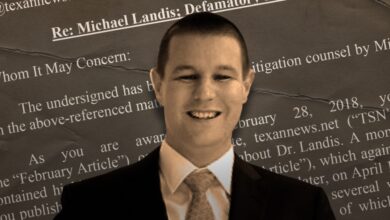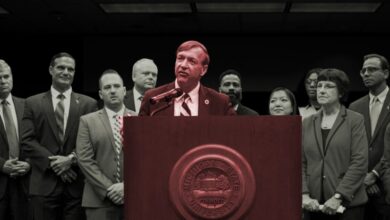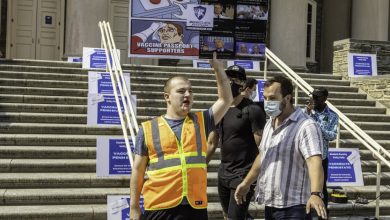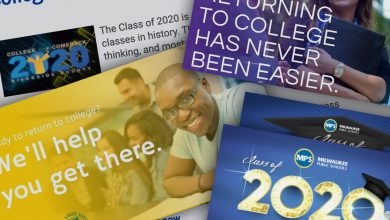The Damaging Myth of the Natural Teacher
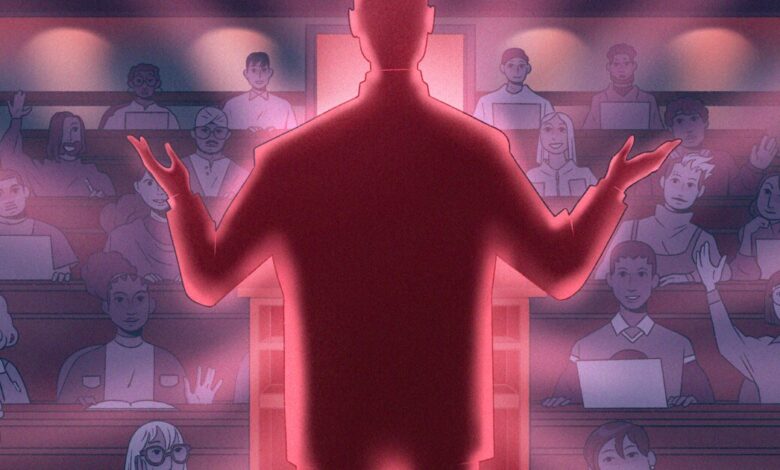
So when the first student evaluations rolled in after her research methods course ended in the fall of 2008, she was shocked. Some students complained about tricky questions on the exams. A couple intensely disliked her. “The feedback,” she recalls, “was just devastating. I thought I had made the wrong career move.”
Good teaching is really a skill, one that can be learned and refined.
Sathy understands now how misguided some of her notions about effective teaching were. For one, she thought her job was to cover the content. Only later did she realize that she wasn’t so much teaching as dumping a bunch of information onto her students, leaving no time for discussion or practice. It wasn’t uncommon for her to whip through 70 or more slides in 75 minutes. She remembers, too, feeling appalled and frustrated when students flubbed exam questions even though she had pulled them, word for word, from those same slides. She expected them not just to remember the concepts but to apply them. “How could they not get it?” she wondered at the time.
“I cringe now,” she says, “to think how little I understood about how learning actually worked in this course.”
The mistaken ideas about teaching that Sathy had early in her career are widespread — and not only among new instructors. Good teaching is often seen as a natural talent when really it’s a skill, one that can be learned and refined.
Fast forward 13 years and Sathy is known by many of her peers and former students as a phenomenal teacher. She has won a slew of awards at the University of North Carolina at Chapel Hill, where she is a professor of the practice of psychology and neuroscience. And she is nationally known for her innovative approach to teaching large lecture courses, which has led to a significant improvement in her students’ academic performance.
Thinking back to those early days, though, Sathy sees how that first stumble could have led her in a different direction. If it weren’t for a “big lightbulb moment” that enabled her to quickly understand her mistakes, a fierce determination to become a better teacher, and an openness to seeing her role not as the expert who commands a room, but as a partner in students’ learning, she could have been yet another hapless instructor wondering how to get through the semester without too many punishing evaluations.
“I’m glad I had the courage to keep getting back into the ring,” she says.
A thread that runs throughout the narratives is that you either have “it” — brilliance, charisma, empathy — or you’re out of luck.
A thread that runs throughout the narratives is that you either have “it” — brilliance, charisma, empathy — or you’re out of luck. No amount of training or oversight can change who you are and how you connect with students. Good teachers, in short, are born and not made.
Yet plenty of evidence contradicts the idea that being a leading scholar in your field or having a magnetic personality are necessary ingredients for good teaching. While some people may be naturally gifted at conveying ideas or generating excitement, experts on pedagogy can point to the many ways in which listening to a brilliant lecture doesn’t make you smarter.
Instead, research has long shown that a handful of evidence-based approaches — all of which can be learned and refined — can dramatically improve how well students perform. That includes techniques like crafting a clear and detailed syllabus so students have a roadmap of where they are expected to go; putting students in the driver’s seat so they are actively working their way through material and not just listening to lectures; and allowing plenty of room for practice and feedback from the instructor.
Becoming an effective teacher, in short, takes time, experimentation, reflection, and coaching. Certainly that’s assumed in K-12 education, where a great deal of classroom training and learning about pedagogy is built into the process of becoming a teacher.
So why isn’t that happening in higher education?
Colleges everywhere say that teaching is central to their mission. Yet anyone surveying the landscape in search of the systems necessary to foster effective teaching, and the incentives to pursue it, would find a disparate collection of projects, funders, and evangelists. As Sathy’s experience illustrates, that leaves many new faculty members vulnerable in the classroom and reliant on their own initiative to seek help.
That disjunction has many roots. Doctoral programs continue to place more emphasis on turning out strong scholars than on building strong teachers, even as the percentage of graduates who secure tenure-track positions at research-intensive universities continues to shrink.
Once they arrive on campus, faculty members are expected to learn through trial and error, often in the kinds of large introductory courses that are among the most challenging to teach. Campus teaching centers are frequently underfunded and their services optional. Faculty members whose primary responsibility is to instruct — namely, contingent faculty — are given less authority and pay than their tenured peers, signaling the second-rung status of teaching.
Perhaps most significantly, the narrow and flawed ways in which teaching is measured — typically through student course evaluations — send a clear message to faculty members about how the administration views that part of their job. Research comes with rigorous peer review and public scrutiny; teaching does not.
“Most of us were thrown into the classroom with little or no training. And yet we’re called professors,” says Ginger Clark, associate vice provost for academic and faculty affairs at the University of Southern California, who has been working to change the teaching culture on her campus. “We spend our careers trying to figure out how to do this. We don’t really get any help. We can’t really admit we don’t know how to do this effectively. We figure out how to work within the system, which usually means getting good student evaluations. Then someone comes along and says, Hey, you know the research says that student evaluations aren’t really valid measures of good teaching.”
The pandemic, in fact, sparked conversations that were the first some professors had ever had with their peers about what happens in the classroom. Collectively they asked themselves and each other: How do I help my students care about this subject? If I need to pare down my class, what are the most important things they need to know or be able to do? How will I know that they learned anything?
It’s no wonder that, in the face of this confusion, the myth of the natural teacher lives on.
While that rhetoric has shifted in recent decades, Zimmerman, a professor of the history of education at the University of Pennsylvania, points out an obvious paradox: Even as universities have become more bureaucratic and centrally controlled, teaching continues to operate largely independent of oversight. Part of that is tied up with the concept of academic freedom. Professors believe that they should have full control not only of what they teach but of how they teach it.
The public, however, isn’t so sure, Zimmerman and others have noted. The last decade or so has seen a wave of books and op-eds decrying how little some students learn in college and questioning the worth of a degree. As public mistrust grows, so does an apparent mismatch of values: Universities see themselves as generators of knowledge and scholarship, operating, in effect, “a prestige economy.” The public sees their most important function as teaching.
For their new book What’s Public About Public Higher Ed? (Hopkins), Stephen Gavazzi, a professor of human development and family science at Ohio State University, and E. Gordon Gee, president of West Virginia University, surveyed nearly 6,000 people about their perceptions of college. One thought exercise was to ask how they would spend $100 of public money on higher education. Respondents generally said they would put about half of that toward teaching and $25 each toward research and service.
“That really represents a contradiction in how universities like to position themselves,” Gavazzi told the nonprofit news organization Open Campus.
But lately, demographics and data are pushing back against this myth. As enrollments of first-generation and low-income students expand, effective teaching has become key to colleges’ survival, as well as to their commitment to equity. Students who struggled can no longer be dismissed as “not college material.” Poorly designed or taught courses can disproportionately hurt those from less privileged backgrounds. This is happening most notably in gateway courses that might determine students’ majors — or whether they stay in college at all.
David Laude is a chemistry professor at the University of Texas at Austin, and one of the many evangelists on campuses throughout the country preaching the importance of teaching reform.
Laude, who began teaching in the late 1980s, says he fell into the trap of thinking that one of his responsibilities in introductory courses was to weed out those who didn’t belong. It was, after all, what he had experienced as a student himself. So he graded on a curve, flunking, he estimates, about 20 percent of his students over the years. “My expectation was that the smart kids would get the A’s, others would get C’s and D’s,” he says. “It wasn’t like I didn’t care, but I didn’t see them as individuals.”
Laude has given many talks about his teaching conversion, which came about, he says, only after he took an administrative position focused on raising graduation rates and began seeing patterns among those who struggled the most in his courses. They were typically the lower-income students and those who were the first in their families to attend college.
“How could I have been so clueless?” he asks now.
He sees a direct connection between his early missteps and how faculty members have been acculturated. They are still trained, in short, to be teachers of course content, not teachers of students. “If all I’m asked to do is stand up in front of students and present an excellent lecture on a topic and close my book and leave,” Laude says, “I have done nothing to address the fact that there may be students in the classroom who do not understand what I taught.”

Olivia Fields for The Chronicle
Laude’s transformation was so significant, he says, that he no longer thinks of himself as a teacher, but as a facilitator and a motivator. And his work at UT-Austin in restructuring gateway courses and designing other interventions for at-risk students has helped the university substantially raise four-year graduation rates.
Other teaching evangelists tell similar stories. Like Laude, they may have had an epiphany in the classroom. Then they spent years of hard work reconsidering the role of the instructor and redefining their interactions with students. Often they forged ahead despite cautions from colleagues that spending too much time on teaching wasn’t going to help with promotion and tenure review.
To change that way of thinking, you have to change the ecosystem, reformers say. And that’s a heavy lift. It means reforming graduate education. It means choosing leaders who care about raising graduation rates and closing equity gaps, like Laude and his colleagues did at UT-Austin.
It also means incorporating training and a rewards structure into academic life, so that faculty members can learn new ways of teaching without feeling as if that work is invisible, or that it comes at the expense of what’s really valued: their scholarship.
Lissette Lopez Szwydky, an associate professor of English at the University of Arkansas at Fayetteville, has thought a lot about these issues over the years. On the one hand, she says, humanities professors tend to see teaching as a vocation, and they may be less likely than STEM professors to fall into the weed-out way of thinking. Freshman composition, one of the standard gateway courses on many campuses, for example, is taught in small groups and focused on preparing students to succeed in college.
If your institution prioritizes research, that’s what’s going to make or break your tenure file.
“The humanities is a space where pedagogy is important and innovation is happening,” she says. The problem is that at an institutional level it is rarely encouraged or rewarded.
Szwydky finds it striking that when she was a college administrator, before becoming a professor, she was expected to spend two to four hours a week on professional development. It was written into her job description. Her training as a faculty member, by contrast, “has all been self directed, self led, things I want to do. It’s never been part of my annual evaluation.”
It doesn’t matter how many teaching awards you may have earned, she says. “If your institution prioritizes research, that’s what’s going to make or break your tenure file.”
Academe also continues to struggle with how it values research about teaching. Professors interested in discipline-based education research, such as how students learn what chemistry is and how it works, often say that it is perceived as less rigorous than other forms of scholarship. “At most research universities if you were publishing in pedagogy journals they would not be counted or weighted as heavily as if you were publishing in a traditional journal.” Szwydky says.
So how do you change the culture around teaching?
That’s a question Diane O’Dowd has been wrestling with for over a decade. As vice provost for academic personnel at the University of California at Irvine, she has used her administrative position to make changes on several fronts, inspired by her own experiences as an instructor and researcher in neuroscience.
O’Dowd considered herself a good teacher, a view she says was backed up by her student course evaluations. She had mastered the sage-on-the-stage model, had a well-organized syllabus, and liked to ask provocative questions in class.
But when her children were old enough to start applying to colleges, she began thinking about whether they would enjoy her classes. The answer, she realized with a bit of a shock, was “emphatically, No.”
“At home, we have vibrant dialogues. We solve problems together. That’s not what I was doing in my classroom,” she recalls. That kid in the back, feet up on the chair, hoodie pulled down over his face, reading a comic book? “That would have been my son.”
O’Dowd began to see how superficial her teaching evaluations were. Yes, some students called her inspiring, but they didn’t point to anything specific about her teaching style. She also reflected on the fact that her own excitement came from research, which involved exploration, experimentation, and discovery. How, she began wondering, could she create that kind of energy in her classroom?
I know how to get people to the finish line, and none of that has to do with how funny I am.
Her quest led her to join a summer teaching institute on active learning, which led her to revamp her department’s introductory biology course. That led her to a position as a Howard Hughes Medical Institute professor, where she began helping colleagues in STEM consider different ways of teaching their undergraduate courses.
The chancellor tapped her for her current position, she says, to help elevate teaching across campus. One of the first things she did was to enforce a longstanding but little used University of California system policy that teaching must be evaluated using two forms of evidence, not just student course evaluations. A professor might include a reflective teaching statement, or their syllabus. That simple shift, she says, helped discussions about teaching “spread like wildfire.”
The other change she made is a requirement that no faculty member can move more quickly up the ladder — called an acceleration — unless they are outstanding in two areas, not just research. If your teaching or service isn’t also excellent, she says, “I don’t care if you just published four books.”
UC-Irvine has also signaled an increased emphasis on pedagogy by creating a position called professor of teaching. Faculty members in these positions have rights and benefits similar to tenure-track faculty, including Academic Senate membership. They are given start-up funds to conduct research — most do pedagogical research — which allows them to hire graduate students, for example, to help with that work.
Although there aren’t many of them on campus, about 100 out of some 1,400 faculty members, professors of teaching are embedded in many different departments, which makes it easy for them to share their pedagogical ideas with colleagues. “It does not require me, as a professor of neuroscience, to go to the teaching and learning center to learn new things,” says O’Dowd. “I can just walk across the hall to my colleague.”
Other universities have adopted similar strategies to spark deeper discussions within schools and departments about effective teaching.
At the University of Southern California, change began with a report out of the faculty senate outlining how unhappy professors were with student course evaluations as a measure of teaching effectiveness, says Clark, the associate vice provost for academic and faculty affairs. Research has long shown that such evaluations can be biased against women and people of color. And they don’t capture the behind-the-scenes work many professors do to improve their teaching, such as experiment with new coursework or participate in such things as faculty learning communities.
Some of the most effective instructors, Clark says, are also not getting the best evaluations, pointing to a well-known study out of Harvard University to explain why: Innovative teaching strategies, such as active-learning classrooms, don’t always sit well with students. They may feel as if they’re learning more in a traditional lecture, even if evidence shows they perform worse on tests.
Through its Excellence in Teaching Initiative, USC has begun changing the way in which teaching is supported, assessed, and rewarded. It is in the process of asking schools to devise teaching-excellence plans.
The idea, says Clark, is that asking professors in the same discipline to define good teaching will get them thinking about their collective goals. What do they want students to learn in introductory courses? What kinds of professional development should department members engage in? What evidence-based teaching practices will instructors be encouraged to use?
That bottom-up approach is critical, Clark says. “Universities have to be very thoughtful about how they approach the teaching culture, so they’re not implying that faculty aren’t already doing a good job. What they want to do is say, ‘Hey, let’s have an honest conversation about how well we’re really prepared for it.’ You change the system not by evaluating faculty differently, but by asking professors whether teaching matters.”
Valencia College, a community college in Central Florida that relies heavily on part-time instructors, encourages them to improve their teaching by offering certificates and pay increases for participating in 60 hours of professional development.
That emphasis on strong teaching begins before the college even brings anyone on board, says Isis Artze-Vega, provost and vice president for academic affairs. Discussions of teaching start with the hiring process, continue as faculty members start work, and are expanded as they go through a detailed teaching-evaluation process.
But at a research university, Clark notes, those discussions also open a trickier conversation about balancing teaching with other priorities. Some professors have complained that the increased emphasis on teaching excellence might hurt USC’s ability to recruit top researchers. She counters that the shift is part of a tidal wave.
“I don’t think in 10 years there will be many universities left that haven’t changed the way they think about teaching, changed the way they evaluate it and reward it,” she says, adding that higher education ignores the research about pedagogy at its peril. “If we want to live our values and create a more diverse, educated citizenry, then we need to recognize that asking students to fit themselves into our model, as opposed to adjusting our model to fit our students, is not going to work.”
In recent years funders have moved from supporting individual faculty members toward sponsoring institutional changes they think are necessary for reforms to stick.
The Association of American Universities, for example, recently began a project to help departments find better ways to evaluate teaching. It’s part of a decade-old undergraduate STEM teaching initiative, says Emily Miller, deputy vice president for institutional policy.
More early career faculty members are coming into research universities committed to effective teaching, Miller says. “What we really need to do is work on the larger system of how it gets valued and recognized and rewarded.”
The problem isn’t that universities can’t pull together evidence of good teaching, says Andrea Follmer, who heads the campus teaching center at the University of Kansas. It’s that they lack consensus on what they’re looking for in that material. As a result, when promotion and tenure committees are debating whether someone is an effective teacher, “it becomes easy to look at student ratings.”
Follmer is leading a pilot program at Kansas to reinvent the evaluation process, as part of a multi-campus project called TEval. The new process, she says, considers seven benchmarks, including course planning, class climate, and evidence of student learning. Teaching reviews consider, for example, how well course content is aligned with the curriculum, whether a faculty member is involved in scholarship about pedagogy, and how much time they spend advising and mentoring students. Departments are also encouraged to develop “peer triads,” in which small groups of faculty members whose coursework is related meet regularly to talk about their teaching and course design.
The chemical and petroleum engineering department has agreed to use the benchmarks in their promotion and tenure criteria. The chair, Susan Stagg-Williams, expects the new measures will get committees to move beyond a common, and ultimately fruitless, debate: Is a professor getting good evaluations because they give out a lot of A’s, or are they giving out a lot of A’s because they’re a good teacher? Student evaluations simply can’t tell you what you need to know.
Stagg-Williams was somewhat surprised that faculty members agreed to move to the new model, but she thinks that’s because it was presented as a way for professors to support one another’s work and create a “safe space” in which to discuss their challenges. “It kind of takes away a little bit of the scariness of the evaluations,” she says.
Prajnaparamita Dhar, a professor in the department, is leading the charge. As part of the reform effort, she has put her own teaching in the spotlight by inviting another faculty member to observe her class regularly in the hope that it will lead to routine discussions about what is and isn’t working. “What we’re hoping this will highlight is that the faculty member is not there just to look for your mistakes,” she says. “If you’re doing things every day you can showcase all the unique ways you are handling student interactions.”
Stagg-Williams has drawn from her own experience, as an athlete and a coach, to throw her support behind the changes. “One of the things I’ve really been advocating for on our campus is to look at our faculty as a team,” she says. “I have people in my department who are exceptional researchers, and I’ve got faculty who are outstanding teachers. And I’ve got faculty who do really well doing both. As chairs, we should be able to identify the strengths of all the faculty and help them be successful in those areas.”
Even faculty members whose teaching expertise is highly sought after can feel like second-class citizens. That’s how Destin Heilman began to view his role after spending more than a decade at Worcester Polytechnic Institute as a non-tenure-track teaching professor.
Heilman never expected to pursue a teaching career. “I was all about lab research,” he recalls of his graduate experience at the University of Massachusetts Medical School.
But after winning praise for his teaching and mentoring work, and seeing the drawbacks of a traditional tenure-track job — like the never-ending pursuit of research grants — Heilman decided to pursue a more teaching-focused career.
“I took a big risk,” he recalls. “I had a lot of people whispering in my ear: ‘If you’re going to do this, don’t do it too long, because if you’re in that rut it’s going to be too difficult to get back in.”
In 2006 he accepted a visiting faculty position at Worcester Polytechnic. It came without a path to promotion but he loved the work and the institute’s commitment to project-based learning.
Worcester Polytechnic eventually created a promotion system for contingent faculty, and Heilman became an associate teaching professor. He and his peers were heavily involved in pedagogical innovation on campus, including the Center for Project Based Learning and discipline-based education research. And yet they lacked the job security their tenure-track colleagues enjoyed. Nor could they participate in faculty governance.
That began to weigh on Heilman. “We felt that disparity, that mismatch,” he recalls. “I didn’t know if I could swallow this pill year after year if I was not given the same rights.”
That changed this summer, after three years of campuswide conversations involving teaching faculty and traditional tenure-track faculty led Worcester Polytechnic to create a path to tenure and extend contracts for some teaching faculty, along with giving them a role in faculty governance. Heilman, who is the inaugural chair of a new teaching faculty council, anticipates that will help the institute in its national faculty searches and cut down on turnover among teaching faculty.
It also, he says, recognizes and rewards the kinds of research they do on teaching. “It changed the tone on campus for the teaching faculty, such that we feel included. We have been formally valued by the institution.”
While Worcester Polytechnic may still be an exception, more campuses are elevating the position of teaching faculty.
She remembers what it felt like as a novice teacher, and a self-described introvert, to wrestle with the idea that you need to have a big voice and loads of charisma. “It was so hard for me because I know I’m not that person,” she says. “I can’t tell a story to save my life. But I just knew that’s not what good teaching is. … I know how to get people to the finish line, and none of that has to do with how funny I am.”
Sathy says she still receives the occasional negative student evaluation, but she doesn’t focus on those too much.
The mark of a good teacher, Sathy knows, isn’t being liked in the moment. It isn’t charm or brilliance or even empathy. It comes about with practice and research, and it’s ultimately about giving students the tools, the space, and the guidance they need to learn — even when they are no longer in your classroom.
Source link



